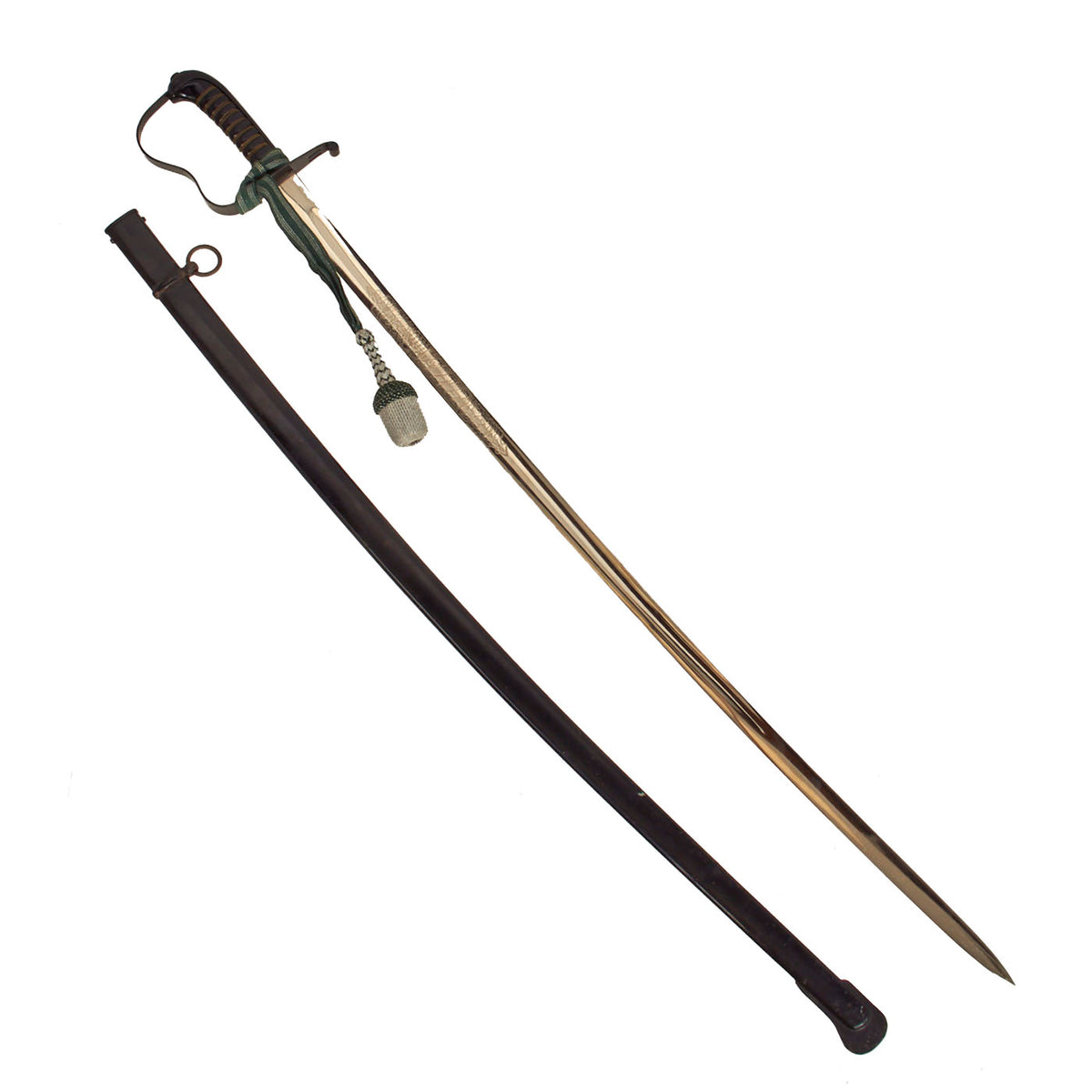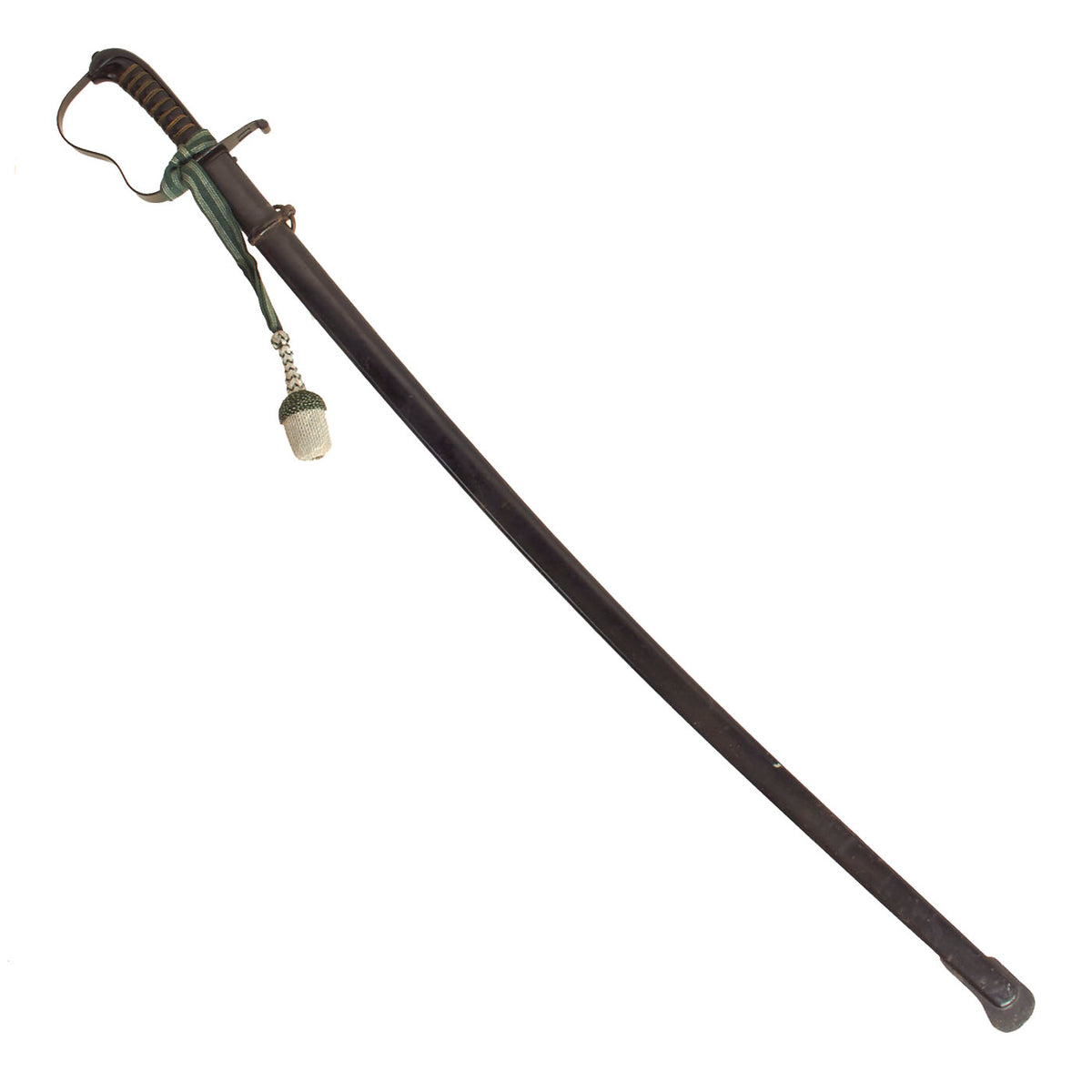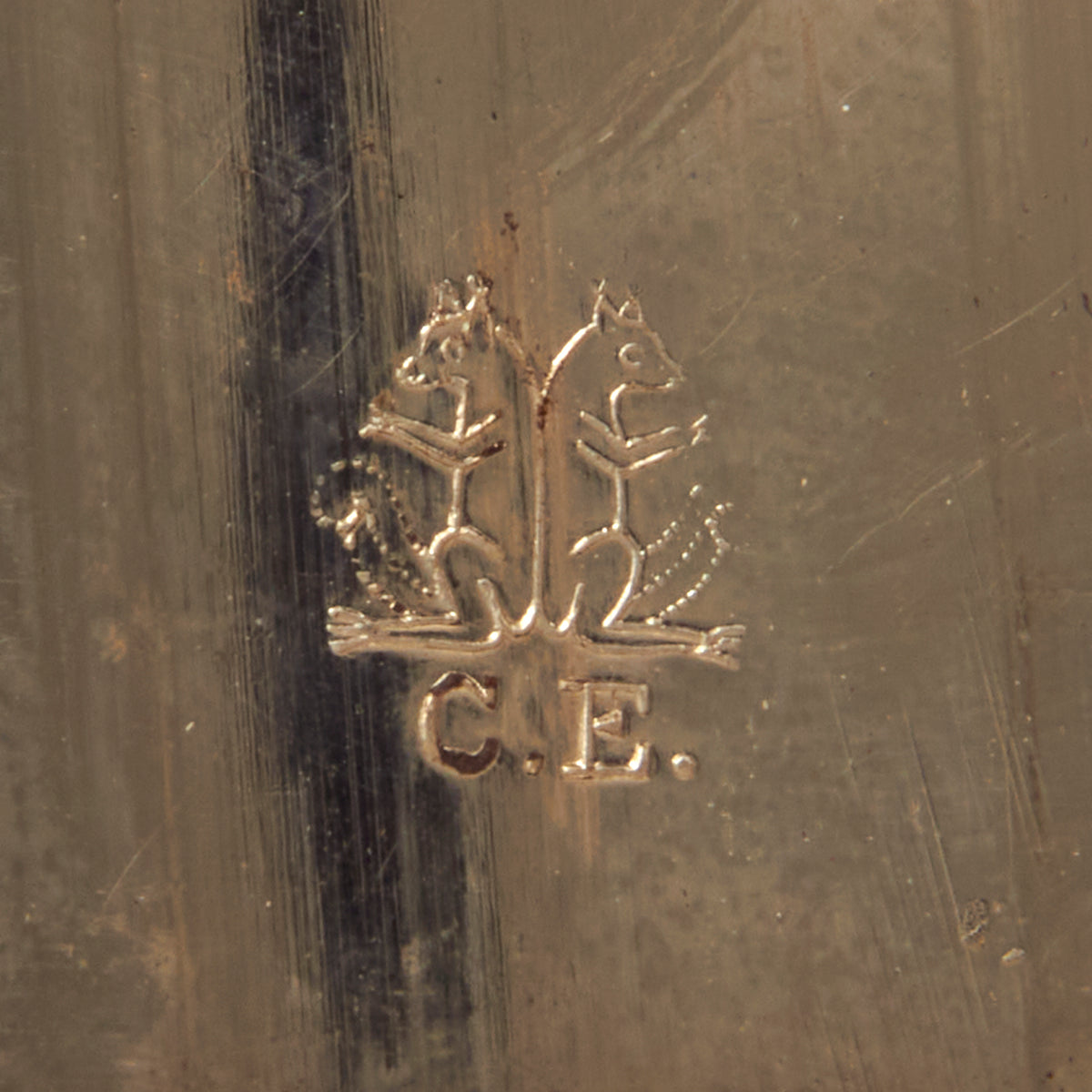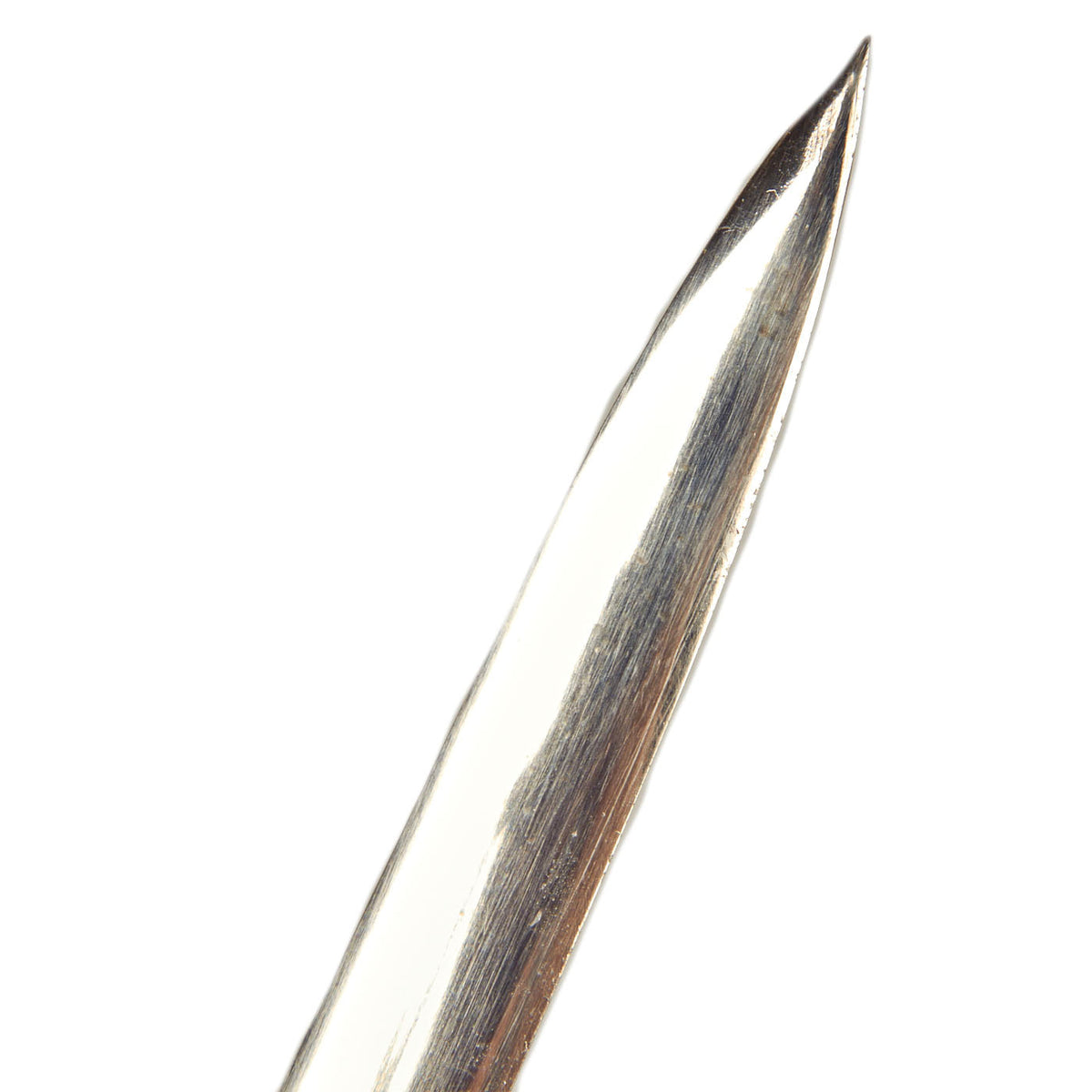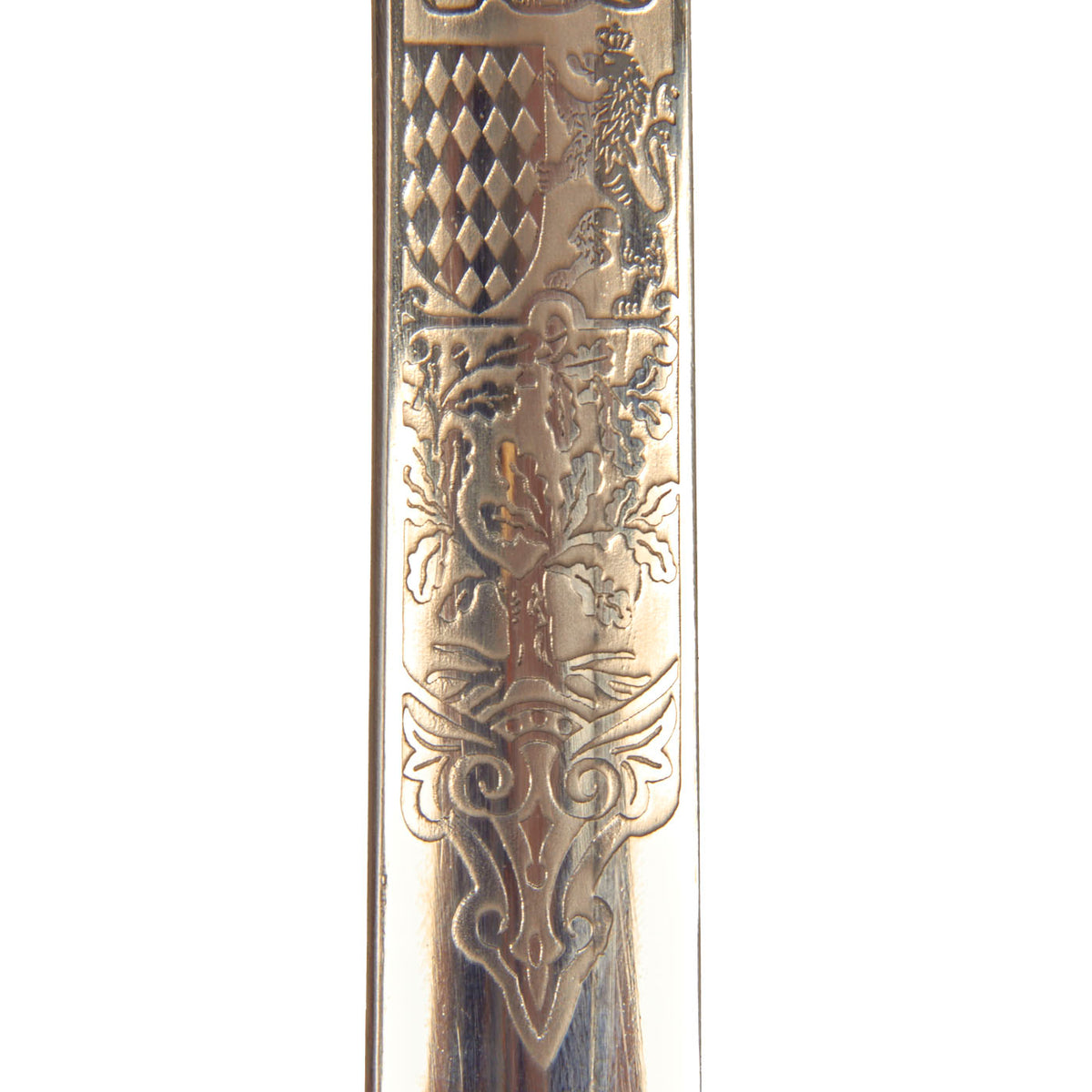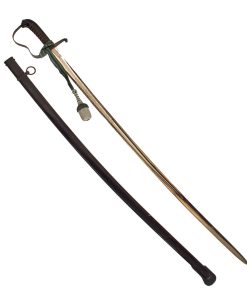Original German WWI Bavarian Infantry NCO Etched Dove’s Head Sword With Troddel and Scabbard – By Carl Eickhorn Original Items
$ 495,00 $ 148,50
Original Item: Only One Available. With the establishment of the German Empire, a series of conventions brought the bulk of the various state military forces directly under the administration of the Prussian War Ministry. Bavaria however maintained a degree of autonomy in peacetime, with its own two (later three) army corps remaining outside the Prussian order of battle. The Bavarian infantry and cavalry regiments retained their historic light blue and green uniforms, distinctive from the Prussian model adopted throughout most of the army. The individual Bavarian soldier swore an oath of loyalty to King Ludwig, though in wartime this pledge of obedience was extended to Kaiser Wilhelm as supreme commander. In July 1914, the Bavarian Army numbered 92,400 or 11 percent of the total Imperial Army.
This is a nice example of the plain nickel plated Dove Head sword worn by Bavarian Army NCO’s, with a lovely “Double-Etched” bright steel blade. This sword design is a simplified version of the Officer’s dove’s head sword, without the decorative designs and engraving usually seen on the hilt. It has the standard “P” guard used on Imperial German dress swords, with a simple cross guard. The hilt is black painted steel from what we can tell, and retains most of the finish, with a lovely patina of age on the exposed metal.
The grip is a very nice example of black bakelite. It is wrapped with three strands of twisted brass wire, with the central strand being much thicker than the outer two. There is some looseness in the wrappings, probably from the bakelite shrinking a bit. The original felt blade buffer is not present. The curved single-edged 31 ⅞” blade with broad 3/4-length fuller, decorated on each side with the Bavarian motto “In Treue Fest” surrounded by decorative border and foliage. The blade is in near mint condition with deep etching and polish.
The reverse ricasso is stamped with the Carl Eickhorn “Two Squirrel” trademark over C.E., for manufacture by the legendary firm of Carl Eickhorn, located in Solingen, the “City of Blades” in Western Germany. Per J. Anthony Carter’s book GERMAN KNIFE AND SWORD MAKERS, this specific version of the mark was used on swords, “walking out” bayonets, and other similar items after 1906. This is exactly the mark that should be on a WWI Blade.
This company was founded in 1865 by Carl Eickhorn, and is arguably the most famous of all Solingen makers. Not only could the family trace their history back 500 years, but they could also demonstrate involvement in the hardening and grinding industries for the same period. Truly the nobility of Solingen Edged weapon dynasties. Eickhorn edged weapons are the most desirable of all makers.
The steel scabbard has a single hanging ring, as the second fitting was for a hook on the hanger. It has the standard black enamel finish, which has worn off in some areas, and the underlying steel has oxidized. The scabbard is still straight, though it does have a small dent on both sides near the drag, which does not interfere with placing the blade in the scabbard.
Overall condition is very good. Ready to display!
Specifications:
Blade Length: ”
Overall Length: ”
Guard Dimensions: ” wide x ” Length
Scabbard Length: ”
Fast Shipping with Professional Packaging
Thanks to our longstanding association with UPS FedEx DHL, and other major international carriers, we are able to provide a range of shipping options. Our warehouse staff is expertly trained and will wrap your products according to our exact and precise specifications. Prior to shipping, your goods will be thoroughly examined and securely secured. We ship to thousands clients each day across multiple countries. This shows how we're dedicated to be the largest retailer on the internet. Warehouses and distribution centres can be located throughout Europe as well as the USA.
Note: Orders with more than one item will be assigned a processing date depending on the item.
Before shipping before shipping, we'll conduct a thorough inspection of the items you have ordered. Today, the majority of orders will be delivered within 48 hours. The delivery time will be between 3-7 days.
Returns
The stock is dynamic and we cannot completely manage it because multiple stakeholders are involved, including our factory and warehouse. So the actual stock may alter at any time. It's possible that you may not receive your order once the order has been made.
Our policy is valid for a period of 30 days. If you don't receive the product within 30 days, we are not able to issue a refund or an exchange.
You can only return an item if it is unused and in the same state as the day you received it. You must have the item in its original packaging.
Related products
Uncategorized
Angolan Rebel 1970s era 60mm Inert Display Mortar from Angolan Civil War Original Items
Uncategorized
Uncategorized
Australian WWII Owen MK1 Machine Carbine SMG Custom Fabricated Replica with Sling Original Items
Uncategorized
Uncategorized
Uncategorized
Uncategorized
Uncategorized
Uncategorized
Uncategorized
Armored Burgonet Helmet & Polearm from Scottish Castle Leith Hall Circa 1700 Original Items
Uncategorized
Uncategorized
Uncategorized
Uncategorized
